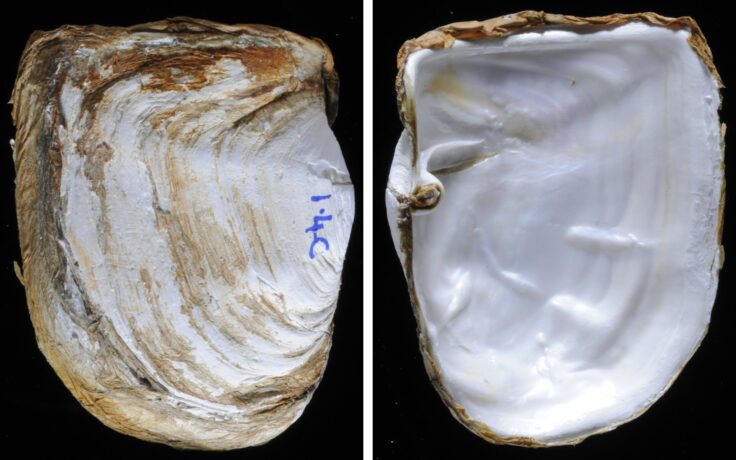New study puts shells under spotlight
A new study on how molluscs build their shells in the sub-zero waters of Antarctica is published today (Friday 11 November) in the journal Scientific Reports.
A team of European researchers used a range of new technologies to look at the molecules and cells involved in shell production of the Antarctic clam, (Laternula elliptica). Their results identified seven proteins from the lustrous mother of pearl shell layer, including two which were totally unique to this species.

The in-depth analysis of the cells, proteins and genes that Antarctic clams use to produce their shell shows the tools this animal uses are very similar to other mollusc species. Two unique proteins were found, suggesting these animals have special ways to help them carry out such complex bio-engineering at sub-zero temperatures.
Lead author Victoria Sleight from British Antarctic Survey (BAS) says:
“We’re really excited by this study because we want to know in detail how shells are made. The ocean is becoming more acidic due to increased atmospheric carbon dioxide dissolving into the sea, so environmental scientists are urgently trying to predict what will happen to life with calcium carbonate skeletons. In order to do this they need to understand how they are made in the first place.”
Aquaculture is also one of the fastest growing food production industries in the world, with molluscs making up around 22% by volume of global production, so understanding shell quality and integrity is crucial to this multi-million pound industry. In addition, shells are also incredibly strong and made from a vastly abundant material – calcium carbonate, so if scientists can understand how molluscs build their shells then innovative new materials could be engineered and produced for society.
The paper An Antarctic molluscan biomineralisation tool-kit by Vicky A. Sleight, Benjamin Marie, Daniel J. Jackson, Elisabeth A. Dyrynda, Arul Marie and Melody S. Clark is published today (Friday 11 November) in the journal Scientific Reports. See: www.nature.com/articles/srep36978
This study involved researchers from British Antarctic Survey (BAS) and Heriot Watt University in the UK, together with colleagues from the University of Göttingen in Germany and the Museum National d’Histoire Naturelle in France.